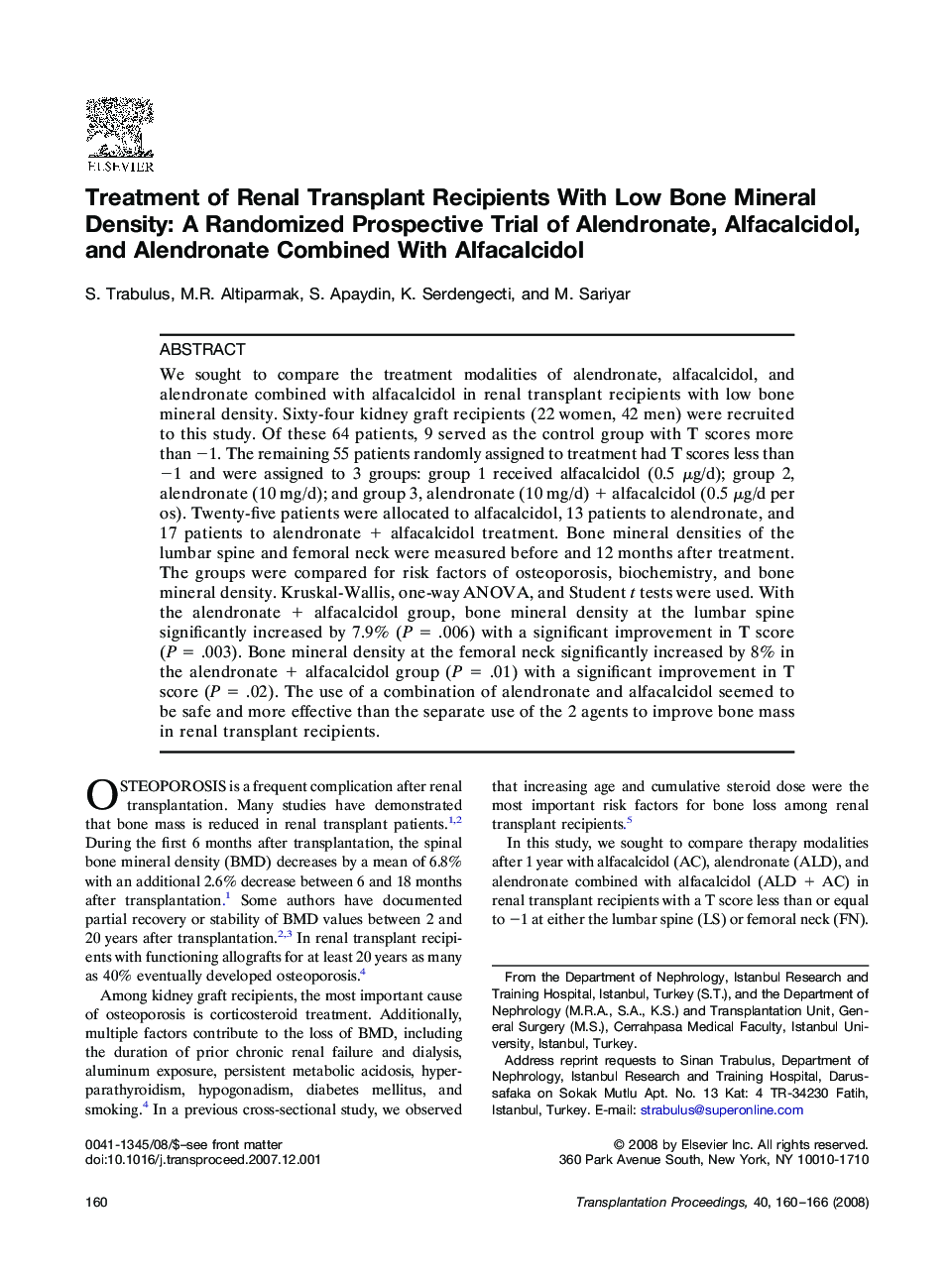| Article ID | Journal | Published Year | Pages | File Type |
|---|---|---|---|---|
| 4260454 | Transplantation Proceedings | 2008 | 7 Pages |
Abstract
We sought to compare the treatment modalities of alendronate, alfacalcidol, and alendronate combined with alfacalcidol in renal transplant recipients with low bone mineral density. Sixty-four kidney graft recipients (22 women, 42 men) were recruited to this study. Of these 64 patients, 9 served as the control group with T scores more than â1. The remaining 55 patients randomly assigned to treatment had T scores less than â1 and were assigned to 3 groups: group 1 received alfacalcidol (0.5 μg/d); group 2, alendronate (10 mg/d); and group 3, alendronate (10 mg/d) + alfacalcidol (0.5 μg/d per os). Twenty-five patients were allocated to alfacalcidol, 13 patients to alendronate, and 17 patients to alendronate + alfacalcidol treatment. Bone mineral densities of the lumbar spine and femoral neck were measured before and 12 months after treatment. The groups were compared for risk factors of osteoporosis, biochemistry, and bone mineral density. Kruskal-Wallis, one-way ANOVA, and Student t tests were used. With the alendronate + alfacalcidol group, bone mineral density at the lumbar spine significantly increased by 7.9% (P = .006) with a significant improvement in T score (P = .003). Bone mineral density at the femoral neck significantly increased by 8% in the alendronate + alfacalcidol group (P = .01) with a significant improvement in T score (P = .02). The use of a combination of alendronate and alfacalcidol seemed to be safe and more effective than the separate use of the 2 agents to improve bone mass in renal transplant recipients.
Related Topics
Health Sciences
Medicine and Dentistry
Surgery
Authors
S. Trabulus, M.R. Altiparmak, S. Apaydin, K. Serdengecti, M. Sariyar,
